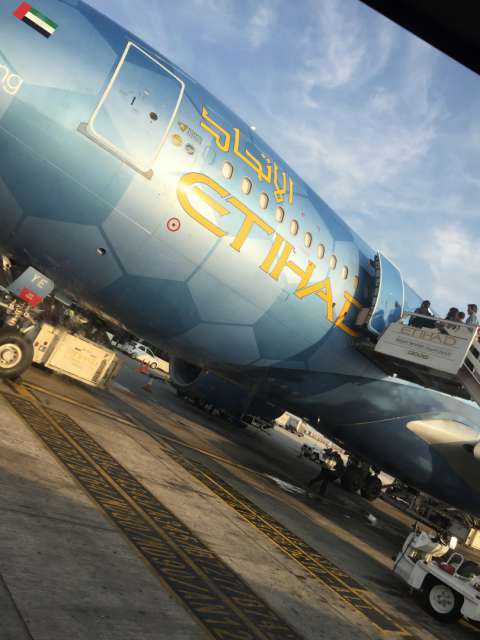Sunday trip in the Mekong Delta
Lolomiina: 14.11.2016
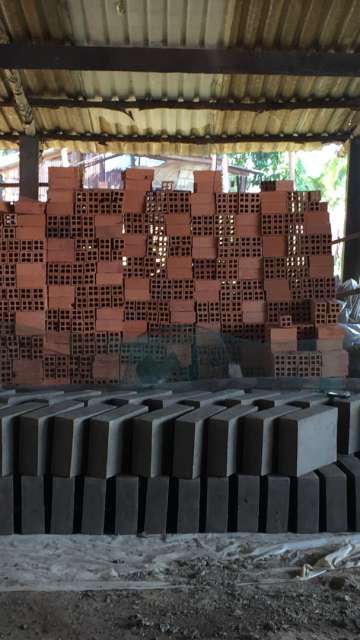
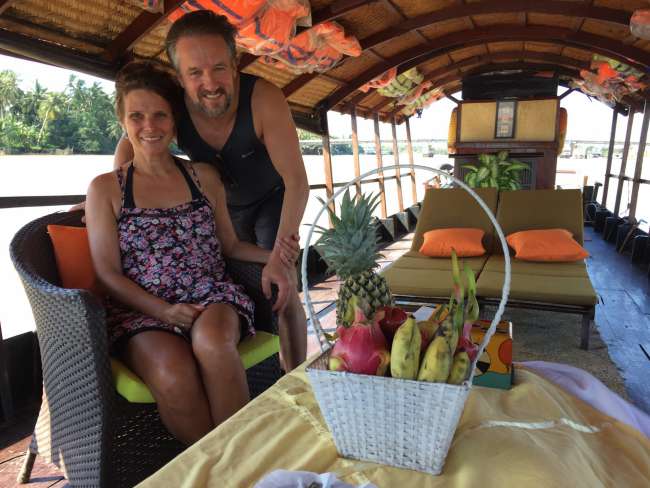
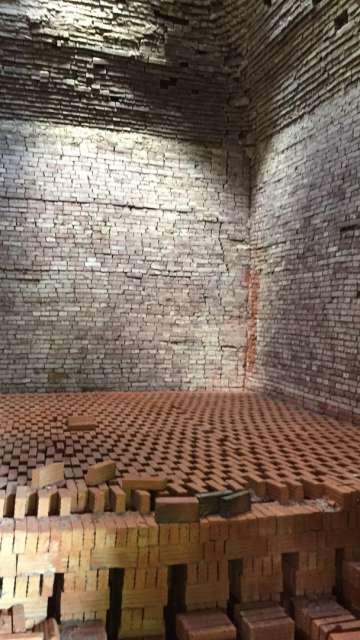
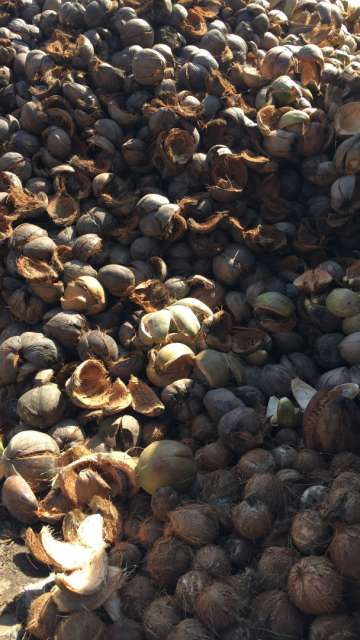
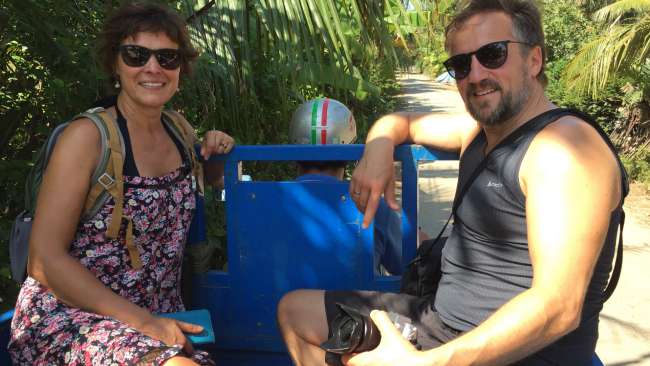
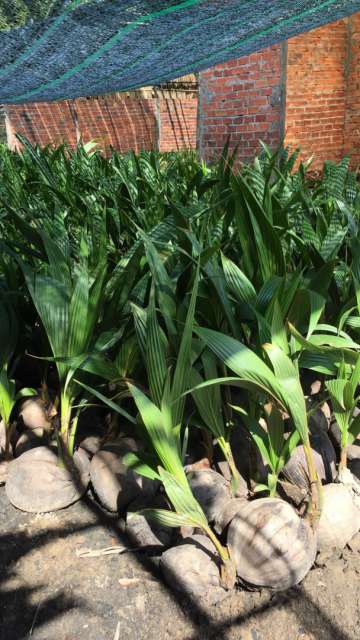
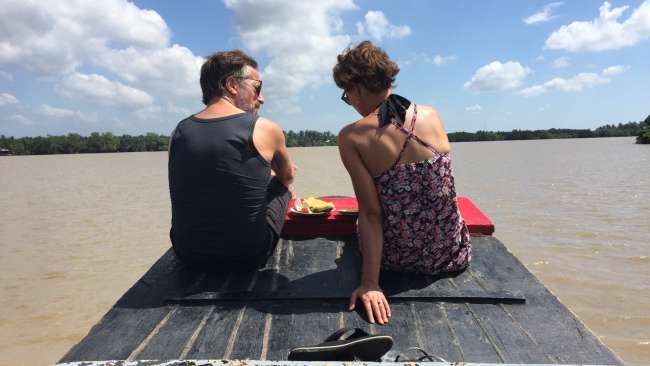
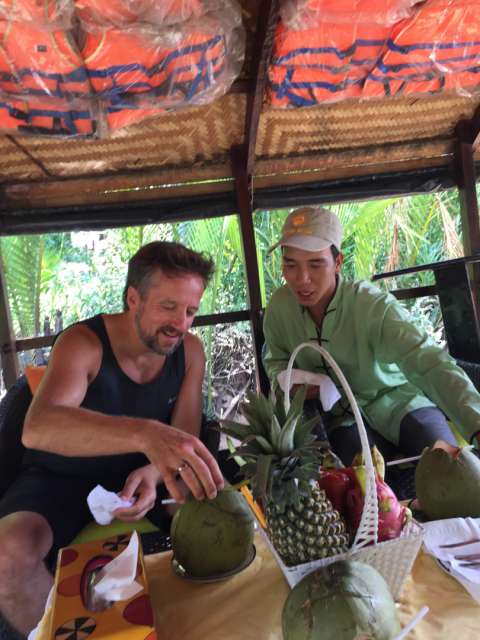
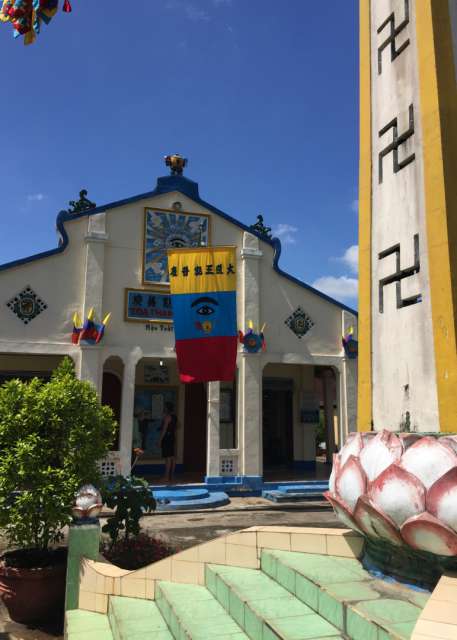
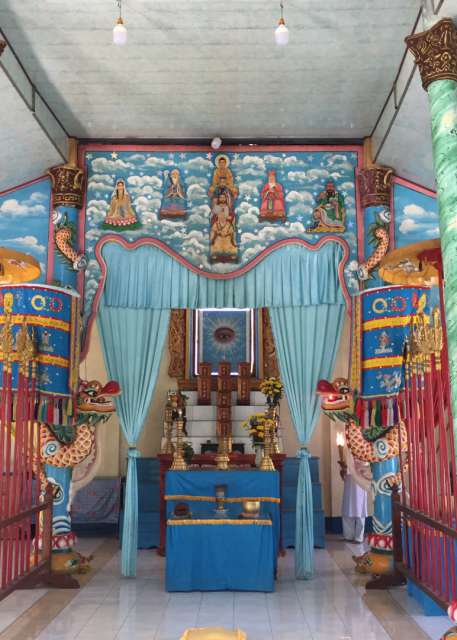
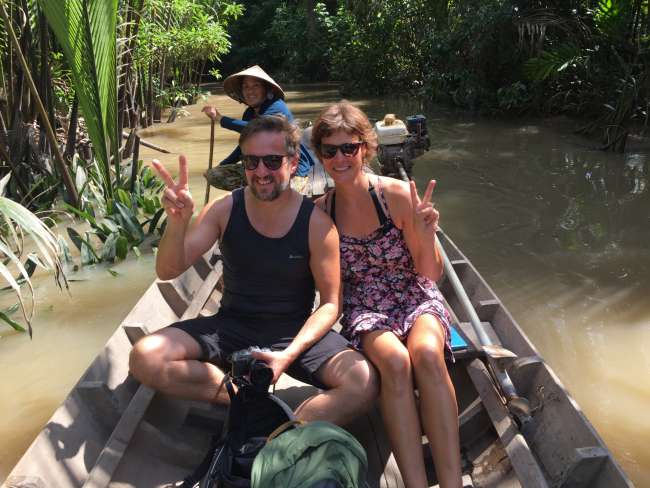
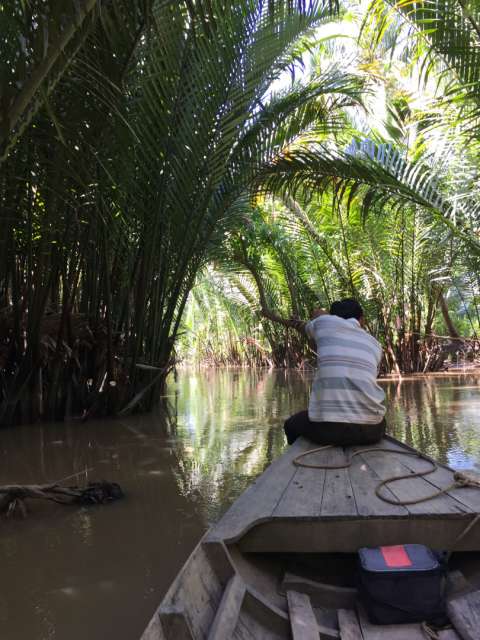
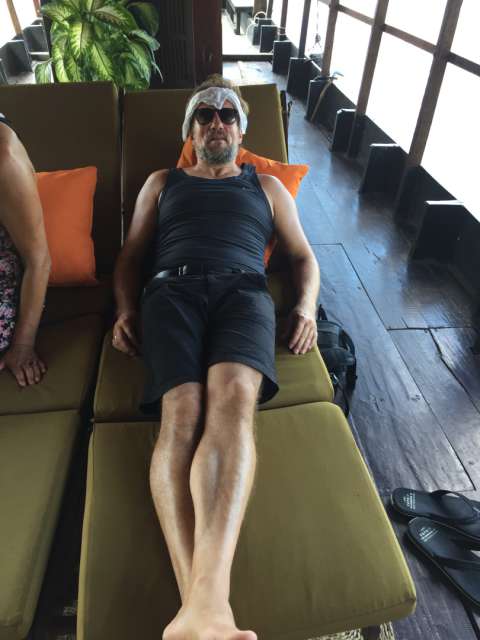
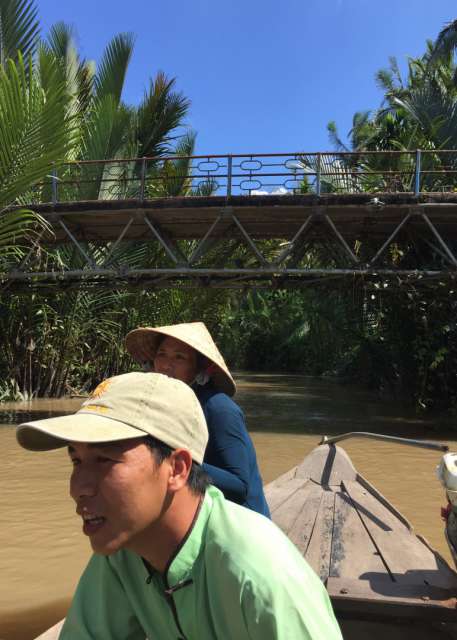
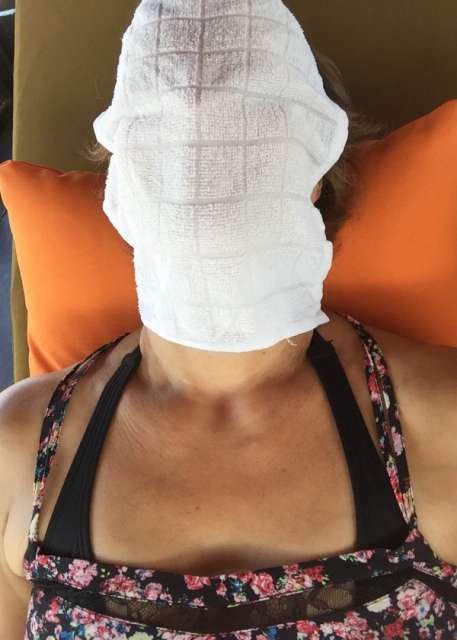
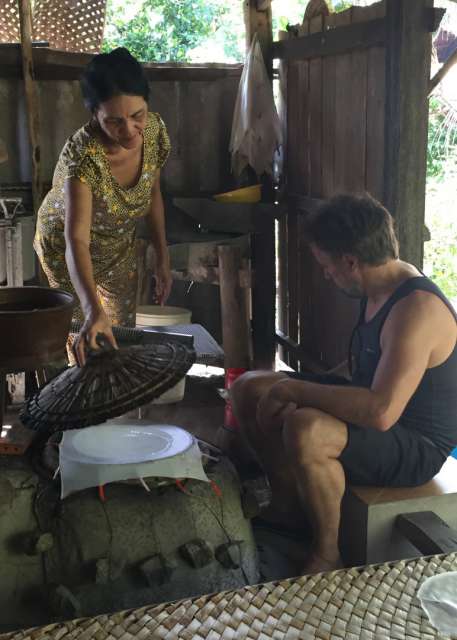
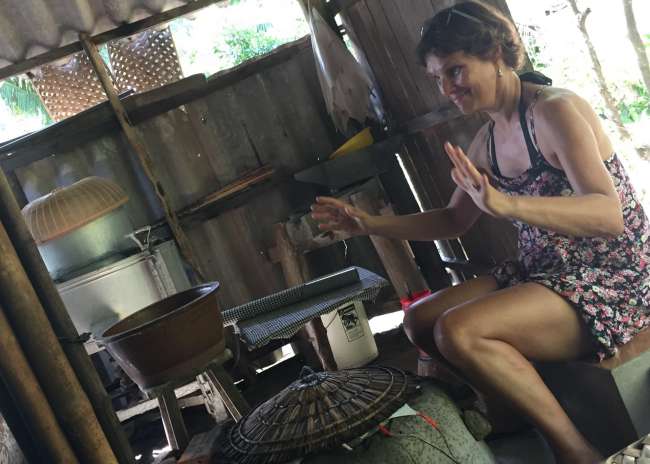
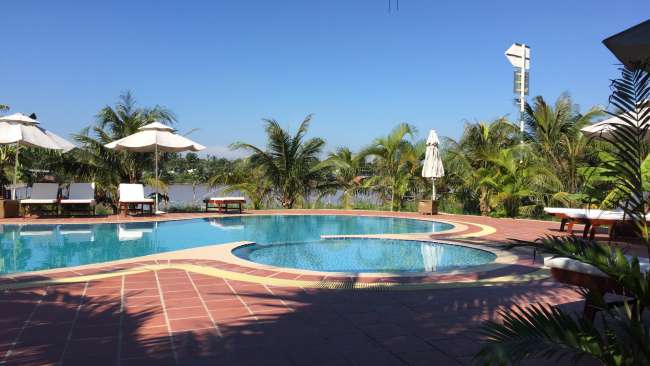
Fa'asoa ile Newsletter
It's Sunday morning - we wake up at 5am (really early), it's getting light, the birds are giving their morning concert, and the first rays of sun promise a wonderfully sunny day. We take advantage of the morning quiet and relax in the hammocks in front of the house 😀. We doze off here for the next 1.5 hours, Stefan writes his blog post and I put together a little video for Facebook. Then we head to the pool, do a few laps, and afterwards we're nice and hungry for a hearty Sunday breakfast.
As a Sunday excursion, we have planned a tour through the river landscape with a visit to the typical crafts of the region. The province of Ben Tre in the Mekong Delta is known for its coconut and rice cultivation. There are also bananas, mangoes, papayas, pomelos, and the delicious dragon fruits growing everywhere - so it's a paradise-like orchard 😀.
Our boat is ready to depart at 9am. Than (funny how many people are called Than here) describes the tour to us. First, we visit a brickworks. And it's really amazing - a man manually produces about 5000 hollow bricks per day using a simple press machine 👍, which are needed for house construction in the nearby region. He also makes larger refractory stones entirely by hand - see ceramic construction. All the bricks are fired in a huge kiln, which in turn is fired using only rice husks (there's plenty of them here). That takes about two weeks - incredible. In the end, he can sell the bricks for $2 each. The ash is used as fertilizer on the coconut plantations, and the clay and sand for the bricks comes from the Mekong River. An eternal cycle.
Next to the brickworks is a coconut farm. We see how everything from the coconut is utilized. There are 25 different types of coconuts grown for various purposes. There is the water palm, whose leaves are used for roofs, or palms whose fruits are twisted into ropes for further processing, such as rice mats. All the parts are processed here as well. Fish are given the unusable coconuts as food. A small tree nursery ensures offspring.
After visiting these two sweat-inducing crafts, a tuk-tuk is waiting for us, and we drive through the plantations and surrounding villages. The people are super friendly, and the children keep calling out 'Hello, what's your name?' or 'How are you?'
At the end of the tuk-tuk ride, the boat is waiting for us again, and Than spoils us with fresh fruits. On the way to the next destination, we pass various fishing nets and learn that besides shrimps, the elephant ear fish, a regional specialty, is caught here.
At the next dock, we switch to bicycles and Than takes us on a 15 km ride through the villages - mostly in the shade of banana or coconut palm trees 😀 but at 28 degrees - it's dripping, dripping.
We pass by a rice noodle factory and witness the production of typical Vietnamese rice noodles. This is also all done by hand - compared to German standards, we are here in a huge open-air museum - for the Vietnamese, this may be important to have a lot of work for many people and to preserve centuries-old crafts.
Our bike tour continues on the village roads, which are completely incomprehensible to us, past a funeral with live music, dozing dogs and cows, and a karaoke bar in the background.
At some point, we arrive at a beautiful temple. It is dedicated to Caodaism. Caodaism is a beautiful idea - it aims to create love and justice in the world and combines the best of Confucianism, Buddhism, Christianity, and Taoism. Caodaism rejects killing, so many followers are vegetarians. Very sympathetic - especially after seeing how the animals are transported for slaughter here 😲.
After the temple, we visit a woman in her little house and are invited in for tea. It's a welcome refreshment in the shade of the coconut palms.
Back at the river, a small boat is waiting for us, and we are rowed through a canal system that reminds us a lot of the Spreewald, except that there are water coconuts growing everywhere and the water is super brown.
Our Sunday trip is almost coming to an end, we change back to the big boat and immediately, now tired from the sun and the many new impressions, we throw ourselves onto the deck chairs on board 😀 and enjoy the ride back to the hotel. When we arrive there, we're not quite done yet and get on the 🚴♀️🚴♀️ again to see the production of rice paper. Once again, we are invited into a woman's private refuge and take a seat in her kitchen. She shows us how she makes a kind of crepe from rice paste using a coconut leaf-fired oven over steam. These crepes are then dried on bamboo sieves in the sun. A typical delicacy is to roast these rice papers into crackers, as we were able to see for ourselves.
After this last experience, we ride back to the hotel and relax in the hammock. The day ends with a splash in the bathtub-warm pool at sunset 🌜 we have a full moon but no supermoon 🤔.
Kerstin
Fa'asoa ile Newsletter
Tali

